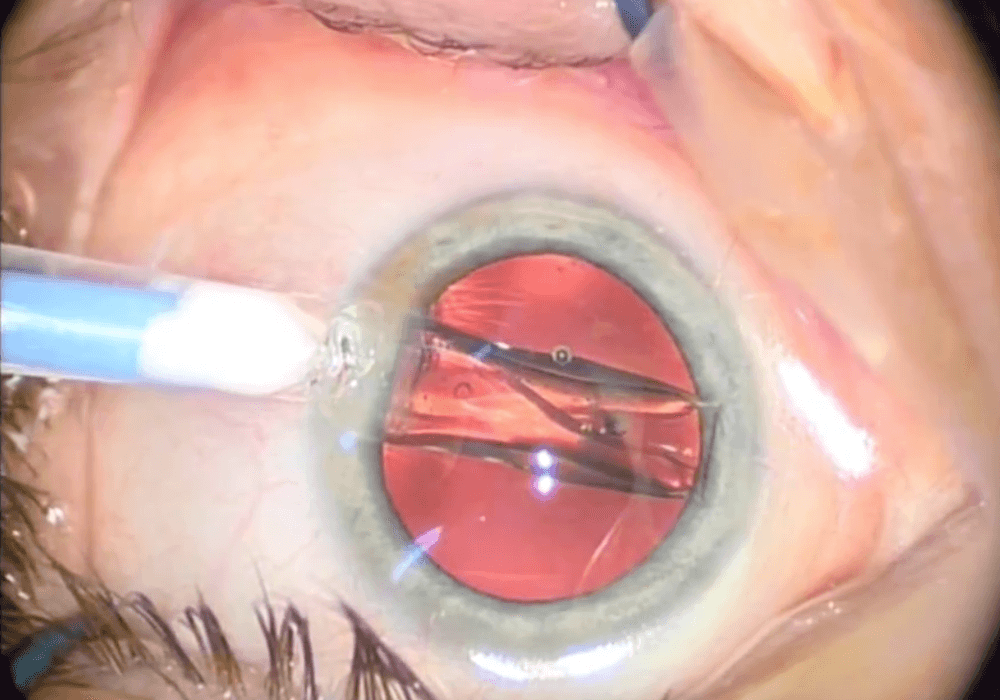 |
|
Despite meta-analysis model revealing a reduction of 3.77mm Hg 12 months after phacoemulsification, the certainty of the evidence of this outcome was ranked as very low. Photo: Christine Sindt, OD. Click image to enlarge. |
It’s long been known that patients who undergo cataract extraction experience a post-op reduction in intraocular pressure (IOP), and researchers in Greece recently sought to clarify its precise IOP-lowering effect in patients with primary open-angle glaucoma (POAG) and ocular hypertension. Their systematic review and meta-analysis of randomized controlled trials, published last week in Journal of Glaucoma, assessed the effect of cataract surgery on IOP reduction in patients with POAG, exfoliative glaucoma, exfoliation syndrome, normal tension glaucoma, ocular hypertension and participants without any of the above. They found that phaco has the potential to meaningfully lower IOP in most instances, although the precise effect estimate remains to be determined.
This meta-analysis included nine arms from nine randomized controlled trials, comprising a total of 502 participants, to evaluate the impact of cataract extraction followed by the insertion of an intraocular lens as a standalone procedure on IOP level one year after surgery.
Overall, the average IOP was reduced by 3.77mm Hg 12 months after surgery. The subgroup analysis, focused on whether a washout period was employed before measuring IOP, revealed that studies with a washout period exhibited a more pronounced IOP reduction of 5.25mm Hg, while studies without a washout period exhibited a reduction of 3.13mm Hg. The sensitivity analysis for the latter group, excluding an outlier study, showed a reduction of 1.81mm Hg.
“It becomes evident that alterations in topical medication usage during the period between the baseline and the post-phacoemulsification follow-up could obscure the true effect of the intervention,” the researchers wrote in their paper. “Nonetheless, despite the small number of studies with washout, the results of our analysis in this subgroup are meaningful, considering that the total number of eyes analyzed in these three trials (n=319) is significantly larger than the total number of eyes analyzed in the six trials without washout (n=183).”
The washout period was the main factor that led to the heterogeneity of the results, as the net effect of surgery was masked and influenced by the topical IOP-lowering medications patients used. The researchers concluded that future studies with medication washout as part of their protocol would be necessary to confirm their results.
Benekos K, Katsanos A, Haidich AB, et al. The effect of phacoemulsification on the intraocular pressure of patients with open angle glaucoma: a systematic review and meta-analysis. J Glaucoma. April 5, 2024. [Epub ahead of print]. |


